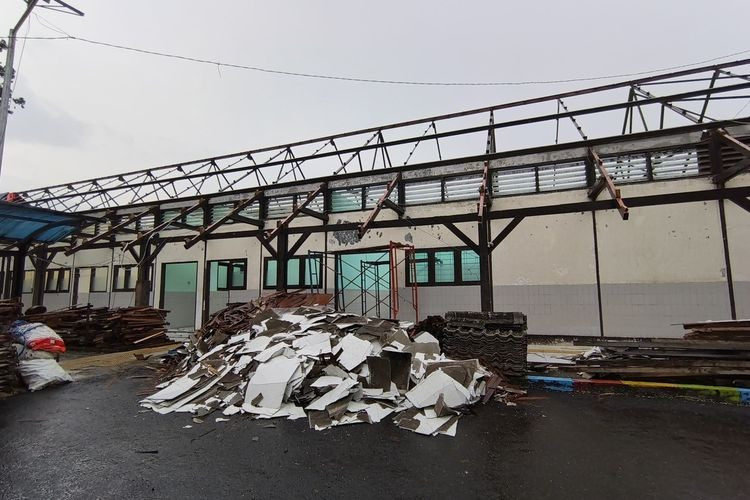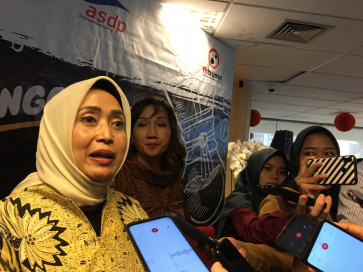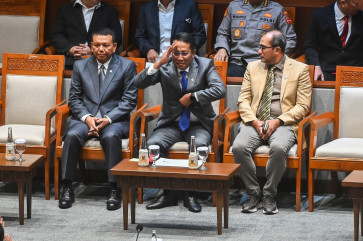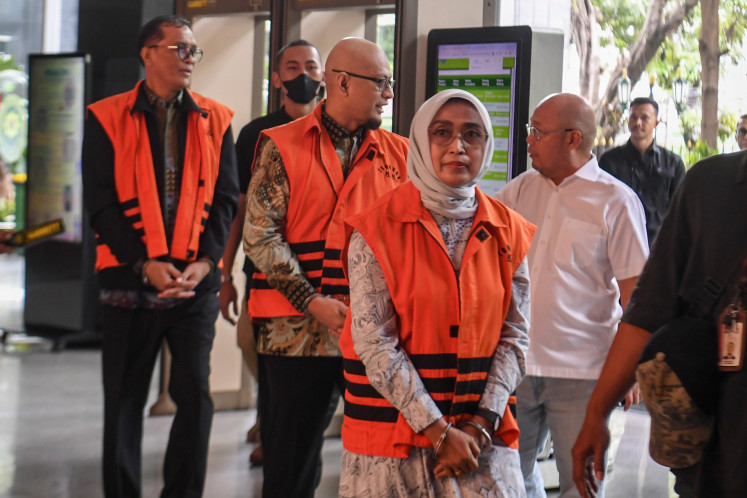Popular Reads
Top Results
Can't find what you're looking for?
View all search resultsPopular Reads
Top Results
Can't find what you're looking for?
View all search resultsWhy another school system?
Many public schools suffer from poor infrastructure, buildings that are outdated or even dilapidated, and lack adequate educational resources.
Change text size
Gift Premium Articles
to Anyone
D
espite only being unveiled to the public in March, President Prabowo Subianto’s ambitious initiative to expand educational access for underprivileged children through hundreds of free boarding schools, called Sekolah Rakyat (community schools), is already set to launch in the upcoming school year.
The government has begun selecting principals for over 60 schools deemed ready by July, with recruitment for teachers and other personnel slated to follow soon. Meanwhile, work on repurposing vacant government buildings into Sekolah Rakyat facilities is being rushed across the country.
This hurried timeline, however, has sparked public scrutiny and raised serious questions about the program’s readiness and potential impact. One of the most glaring controversies emerged recently in Bandung, West Java, where the government-sponsored project displaced visually impaired students from a century-old special needs school located within a complex managed by the Social Affairs Ministry.
Nonetheless, officials remain optimistic and eager, claiming they are prepared to roll out the program immediately. Their goal is to open more than 60 Sekolah Rakyat initially, as part of a larger plan to establish 200 such schools nationwide.
Each facility will host approximately 1,000 students from impoverished families, spanning elementary through secondary education. The government promises these schools will provide quality education and facilities without imposing restrictive academic or IQ-based selection criteria that often exclude disadvantaged children.
But skepticism remains widespread. How realistic is it to expect the delivery of quality education when the program is pushed to begin within just a few months of its announcement?
Proper educational reform requires careful planning, robust infrastructure, well-trained teachers and strong support systems, none of which can be meaningfully built on such compressed schedules.
Indonesia undeniably faces an urgent need to expand access to free and quality education. According to official statistics in 2023, approximately 4 million children aged 6 to 18 are out of school, many coming from low-income families and remote areas. This figure highlights the systemic gaps that urgently need addressing.
But will Sekolah Rakyat, a completely new parallel school system, be effective in solving the problem?
Existing public schools are already struggling. Many suffer from poor infrastructure, buildings that are outdated or even dilapidated and lack adequate educational resources. These shortcomings contribute to declining enrollment, as many parents opt to send their children to private schools, which often offer better facilities and, oftentimes, quality education, while charging tuition fees.
The Sekolah Rakyat initiative also brings into sharp focus the ongoing challenges facing the country’s teaching workforce. According to program officials, the new schools will mainly recruit existing teachers from other public schools. This raises critical questions about the impact on the schools these teachers leave behind.
Public schools, especially in rural and disadvantaged areas, already face shortages of qualified teachers. For years, these gaps were partially filled by contract-based teachers who worked without full civil servant status. However, a recent government ban on the recruitment of such teachers has only worsened the problem, leaving many schools even more understaffed.
Furthermore, the longstanding issues of low teacher salaries and inadequate benefits remain unaddressed. These factors contribute to low morale and high turnover rates, undermining the quality of education. Introducing a new school system without simultaneously improving teacher welfare risks overburdening educators and further destabilizing an already fragile system.
Quality education also demands well-designed curricula, effective teaching methods and continuous evaluation, areas that cannot be rushed. The government’s tight timeline leaves little room for these essential components, casting doubt on the program’s ability to meet its “top-quality” promise.
Instead of rushing new policies that lack thorough study, it would be wiser for the government to focus on improving existing public schools and the broader education system nationwide. Renovating facilities, enhancing teacher training and welfare, and ensuring equitable resource distribution are critical steps toward educational equity.
Public schools offer free education and serve the majority of Indonesia’s students. They should be the foundation for expanding access to quality education, not sidelined by hastily implemented new programs.
After all, to ensure no child is left behind, the government must prioritize fixing the weaknesses within the current system.











